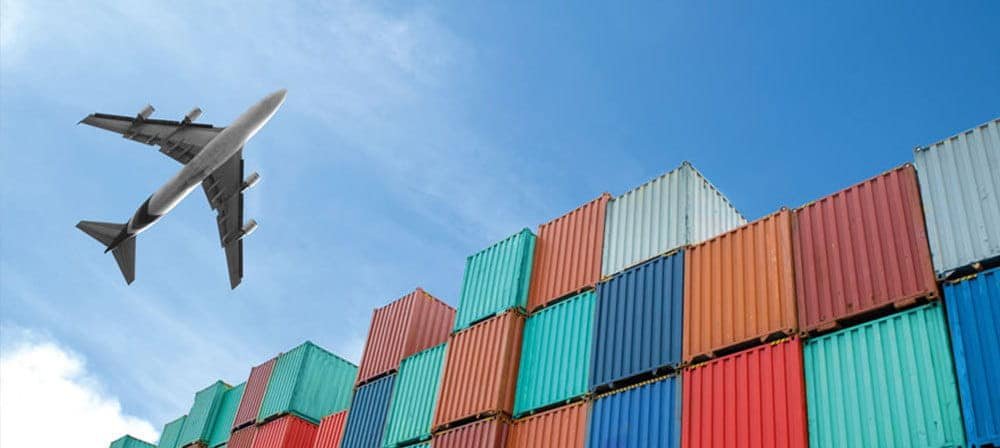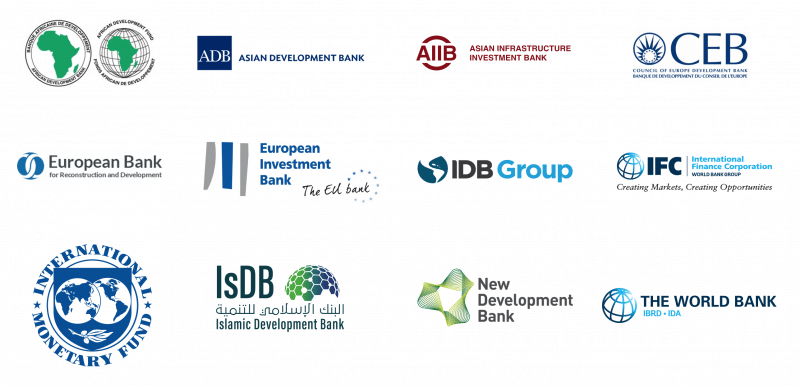Trade Finance
The Foundation: Defining Trade Finance
Trade finance represents a nexus, a crossroads where the world of business transactions and financial services intersect. At its core, it encompasses the myriad financial instruments, products, and services that facilitate international and domestic trade. This is achieved mainly by mitigating risk inherent in global business transactions such as political, currency, credit, and transactional risks.
Evolving from rudimentary barter systems to sophisticated digital platforms, trade finance is now an indispensable part of the global economic structure. It assures that exporters receive timely payment for goods shipped offshore while importers receive deliveries as planned.
A Journey Through Time: The Evolution of Trade Finance
In ancient times when currency systems were not yet established, trade finance began in a primitive form—the barter system. This period was characterized by direct exchanges of goods or services devoid of any intermediary like money. However, with the advent of metallic coins in 700 BC and sophisticated banking systems in ancient Greece and Rome – trade finance began evolving.
The formation of international bodies such as International Chamber of Commerce (ICC) in 1919 further expedited this evolution by introducing standardized rules for Letters of Credit – one among many crucial trade financing tools. With globalization intensifying post World War II era through modernity’s advent into the 21st century – digitalization took hold on every aspect including trade finance.
Global Economics’ Pillar: The Role and Importance of Trade Finance
Trade finance plays a pivotal role in facilitating global commerce—it bridges gaps between exporters who wish to mitigate risk associated with selling to overseas buyers and importers seeking to optimize their cash flow while ensuring supply chain efficiency. It lubricates international commerce machinery—encouraging growth by allowing businesses both big & small to engage securely in cross-border transactions despite geopolitical uncertainties or differing regulatory norms. This often-overlooked segment of finance impacts our daily lives in subtle ways.
From the coffee that wakes us up each morning to the fuel that powers our vehicles, most products we consume have had a journey facilitated in part, if not entirely by trade finance. In essence, this cog of global commerce enhances economic integration and fosters inclusive growth by availing profitable opportunities for businesses across nations.

Types of Trade Finance
Pre-shipment Finance: The Lifeline for Exporters
Pre-shipment finance, also known as “packing credit,” is a short-term trade credit provided to exporters prior to the shipment of goods. This financial instrument serves an essential purpose: it provides liquidity for the procurement of raw materials, production, packing, and transportation costs. Think of pre-shipment finance as the lifeblood that empowers exporters to fulfill their contractual obligations without financial strain.
The benefits of pre-shipment finance are manifold. It bolsters cash flow, enables competitive pricing by mitigating upfront costs, and fortifies trust between trading partners by assuring delivery timelines.
However, it is not without risks. The main risk lies in the potential default by buyers or a sudden cancellation of orders which could leave the exporter shouldering heavy losses.
Post-shipment Finance: Breathing Post-Delivery Relief
Once goods have been shipped and documents relating to export are submitted to the bank, post-shipment finance comes into play. This form of lending offers critical financial cushion until payment is received from international buyers. Whether bridging cash-flow gaps or hedging against currency fluctuations, post-shipment finance shields businesses from economic shocks.
The advantages are numerous – immediate access to working capital following shipment, protection against buyer default or delayed payments and enhanced ability for companies to explore new markets without worrying about immediate repayment pressure. Yet it carries inherent risks too; currency fluctuations can lead to financial losses and there’s always a potential risk of non-payment by buyers.

Supply Chain Finance: Streamlining Trade Transactions
In essence, supply chain finance (SCF) is an advanced set of business solutions that optimizes cash flow by allowing businesses to lengthen their payment terms with suppliers while providing the option for their suppliers to get paid early. It’s a win-win approach, driving operational efficiency and lubricating the engine of trade operations.
The role of SCF in modern trade operations is pivotal. It enhances cash visibility, lowers financing costs, improves supplier relationships, and ultimately strengthens the entire supply chain’s solvency.
However, its implementation requires sophisticated technology and infrastructure. Also, it may not be suitable for businesses with unstable supply chains or when there’s lack of trust among participating parties.
Key Players in Trade Finance
The Pivotal Role of Banks & Financial Institutions
Banks and financial institutions serve as the lifeblood of trade finance, playing crucial roles across different stages of a transaction. Their primary function is to provide short-term credit to exporters and importers, ensuring a smooth flow of goods and services across borders.
They assess the risk involved, determine the cost of capital, and facilitate payments between trading parties. By issuing financial instruments such as Letters of Credit (LCs) or Bank Guarantees, they reduce uncertainties and enhance trust between parties in international trade.
However, these institutions face significant challenges. The evolving regulatory landscape imposes stringent compliance requirements that banks must navigate expertly.
Further complicating matters are geopolitical risks and economic volatility which can lead to a dramatic surge in defaults. Additionally, the pressure to digitize operations and implement advanced technologies is escalating due to fintech competition.
Export Credit Agencies (ECAs): Stewards of International Trade
Export Credit Agencies principally exist to support domestic industries by facilitating international trade through offering insurance and guarantee services that mitigate non-payment risks associated with exporting goods and services abroad. ECAs offer competitive financing terms which make products from their home country more attractive on the global market.
The impact ECAs have on international trade cannot be overstated; in fact, they are often considered essential drivers for global business growth. By providing cover against political or commercial risks that private insurers won’t tackle or by filling gaps where commercial financial solutions are inadequate or overly expensive, ECAs underpin vast volumes of trade yearly.
Multilateral Development Banks (MDBs): Catalysts for Growth
Multilateral Development Banks operate on an international level with multiple member countries contributing capital. Prominent examples include – The World Bank Group, Asian Development Bank among others.
Their main objective is promoting economic and social development in low-to-middle income countries by providing financial and technical assistance for development projects. This often includes large-scale infrastructure projects that stimulate trade and industry.
Their significance lies in their capacity to attract private capital for funding, thus increasing the total pool of resources available for development. MDBs often finance projects viewed as too risky or extensive by private investors.
As such, they play a vital role in stimulating economic growth, reducing poverty levels, and paving the way for sustainable development in participating countries. This invariably contributes positively to the global economy by facilitating trade diversification and boosting resilience against economic shocks.

Trade Finance Instruments: The Tools of the Trade
Letters of Credit (LCs): The Trust Builders
A Letter of Credit (LC) is an irrevocable commitment issued by a bank, typically the buyer’s, to pay the seller a stated amount within a specified timeframe once the stipulated conditions are met. In essence, it provides the seller with certainty that they will be paid for their goods or services as long as they deliver according to contract terms.
Various types of LCs exist in trade finance. A Sight LC requires payment to be made immediately upon presentation of documents, whereas a Usance or Time LC allows for deferred payment.
Furthermore, we have Revolving LCs and Red and Green clause LCs, each serving particular purposes and offering unique features depending on trading needs. Though these instruments provide security against non-payment risk and enhance trust between unfamiliar trading parties, potential risks include discrepancies in documentation and increased costs due to banking charges.
Bank Guarantees: The Security Nets
A Bank Guarantee stands as a powerful commitment given by a bank assuring that the liabilities of its client will be met. In other words, if the debtor fails to settle their debt, the bank covers it on behalf of them.
These instruments serve to secure financial safety and instill confidence among parties involved in various business ventures. Performance Guarantees assure completion of contractual obligations while Financial Guarantees ensure financial losses are covered.
Bid Bond Guarantees secure tender bidding processes while Advance Payment Guarantees protect upfront payments made by buyers against non-delivery risks from sellers. Each type serves different commercial needs but carries limitations such as high setup costs for businesses and risk concentration issues for banks guaranteeing multiple obligations.
Bills for Collection: The Old Reliables
Bills for Collection signify one of oldest forms utilized in international trade finance. This instrument involves a bank acting as an intermediary without accepting any credit risk. The bank is responsible for the collection of funds from a buyer against delivery of documents, or vice versa.
This process involves a series of steps starting with the seller shipping goods and sending documents to their bank (the Remitting Bank). These documents are then sent to the buyer’s bank (the Collecting Bank), which releases the documents to the buyer upon payment or acceptance for payment at a future date.
Bills for Collection offer simplicity, cost-effectiveness, and flexibility in terms of negotiation between buyer and seller. However, potential issues include non-payment risks due to lack of guaranteed payment instruments like LCs, and disagreements arising over interpretation of contractual terms.
The Dawn of Digital: Blockchain Technology in Trade Finance
As technological advancements continue to evolve, so does the landscape of trade finance. Blockchain technology, a decentralized digital ledger system, is making substantial strides within this financial landscape. It allows for the recording of transactions across several computers so that any involved record cannot be altered retroactively, without alteration of all subsequent blocks.
This unique property bestows unprecedented security and transparency to parties involved in trade finance. The application of blockchain in trade finance can revolutionize various processes traditionally burdened with bureaucracy and excessive paperwork, such as letters of credit or supply chain management.
The transparency offered by blockchain significantly reduces the risk associated with global transactions and accelerates processes by providing real-time updates on goods and funds flow. However, these advantages come coupled with potential challenges such as regulatory hurdles, technical complexities, and the required paradigm shift towards trust in a decentralized system.
Embracing AI & ML: The New Sentinels of Trade Finance
In addition to blockchain technology, Artificial Intelligence (AI) and Machine Learning (ML) have emerged as significant game-changers in the realm of trade finance. These technologies have found profound application in risk assessment – their algorithmic intelligence can analyze large data sets to identify patterns that humans may overlook. Similarly, AI & ML are being harnessed for fraud detection by identifying abnormalities that suggest fraudulent activity.
Moreover, leveraging AI & ML can automate laborious tasks like document verification and discrepancy detection – thus improving efficiency while reducing human error. Despite these promising applications though, it’s important to address challenges such as privacy concerns or ethical implications stemming from reliance on automated systems for decision-making processes.
The Horizon Ahead: Future Prospects
Unquestionably technology will take up more space within trade finance moving forward. Although at early adoption stages, these technologies hold immense potential to revamp the industry. By addressing the challenges ahead and promoting a culture of innovation and adaptability, trade finance is poised to fully harness the power of blockchain, AI, and ML. The implications of this are far-reaching; faster and safer transactions, cost reduction, fraud mitigation and ultimately a more dynamic global trade ecosystem.
Conclusion
Technology stands as an essential catalyst for innovation in trade finance. While challenges persist in their application, they represent not barriers but stepping stones for progress. As we look towards the future with optimism, we witness the dawn of a new era in trade finance – one that is not just digitized but secure, efficient and resilient.





